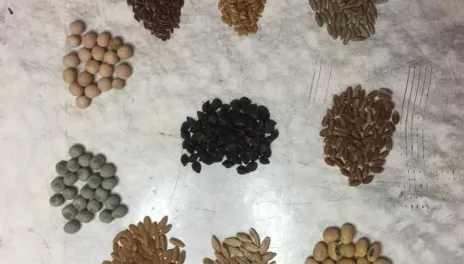Choices and Rules
The Carrington Research Center’s Foundation Seed Program has many choices to make and rules to follow when it comes to the planning stage of the planting season. As we all know Mother Nature is the ultimate rule maker and has control of our choices. In our planning process, choices are harder to make and solid rules are easier to follow.
The spring of 2021 was very dry and CREC Seedstocks started planting April 8, and, for the most part, didn’t have to worry about wet potholes. In fact, the season was so dry that the CREC had to terminate 32% of our winter rye acres due to lack of germination. The whole season was very short on moisture. Our normal spring start date is around April 20.
The Spring of 2022 was very wet and cold. As of May 15, CREC Seedstocks had not started planting. From September 1, 2021 to April 30, 2022, the CREC recorded 12.93” of moisture, with 52 days of recorded moisture during those eight months. A snow/sleet/rain storm mid-April was comparable to the March 1966 and April 1997 spring storms.
This planting season is very much delayed, but with good moisture we should have good emergence and plant population to help control weeds.
After many changes, the CREC Seedstocks Program has chosen nine crops and 33 varieties to plant for the 2022 growing season. Within the 33 varieties, we chose to work with 14 experimental lines/new varieties. The list of crops includes: four barley (two experimental lines), one buckwheat (NDSU experimental), one corn (silage), four durum (one new NDSU variety), seven field peas (three experimental lines, one new NDSU variety and one new private variety), four flax (two new varieties and one experimental line), six soybeans (three conventional, three GT soybeans, and one GT experimental), five wheat (two experimental NDSU lines plus two new varieties, NDSU+MNCIA) and one winter rye.
If you are a seed grower then you, too, are likely changing plans for the season. As you adjust your planting plans, do not forget the following rules required for the seed certification process:
1) June 15 is the deadline for small grain field inspection applications. Growers must send in a bulk certificate or seed tag that was issued to you from the seller of the grain. Don’t forget to sign, date and send a payment with the application.


2) Durum fields must have a two-year history of no wheat. Field inspection will not pass if this requirement is not fulfilled.
3) Include FSA paper maps or GPS markings.
4) Fields must have a 5-foot isolation strip/buffer around the edge. This can be a ditch, fence line, mowed or tilled area, and the buffer must be in place before the inspector comes.
5) Finally, use your best weed management practice for a clean field.
Dave Copenhaver
David.Copenhaver@ndsu.edu
Foundation Seedstocks Specialist
